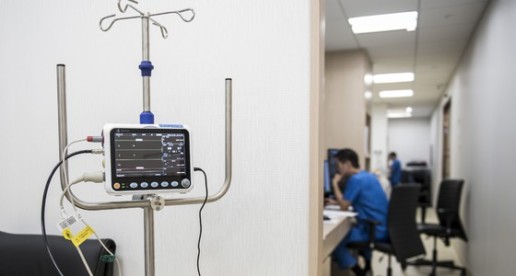How to bridge the health insurance knowledge gap for younger employees
More often times than not, when younger employees are searching for their own health insurance plans, they make common and costly mistakes due to the lack of education in regards to health care plans. Proper education could help the young generation of employees for their health, wellness, and future. Read this blog post to learn more.
With the passage of the Affordable Care Act, young adults were able to stay on their parents health insurance plans until the age of 26. But once they get their own health insurance, many young employees make common and costly mistakes because they don’t have the proper education when choosing their own programs.
This information gap could result in employees being hesitant to seek care, resulting in higher medical expenses for employees and reduced productivity from sick leave.
“It’s a challenge— there’s a fair number of employees that will come off of their parent's insurance at the age of 26,” says Amanda Baethke, director of corporate development at Aeroflow Healthcare. “There's not a lesson that you go through in order to understand insurance.”
Employers can help bridge this gap through proper training and communication strategies. In a recent interview, Baethke shared her thoughts on how employers can provide this extra education and what they can gain from it.
How can employers help younger workers avoid health insurance mistakes?
It's beneficial for HR to do a training where they're going over what co-pays, premiums, deductibles and coinsurance are. When signing up for insurance, employees are trying to decide which insurance to pick and may not understand the full impact of that decision. Employees could pick the cheapest one because they want less out of their paycheck. There's just not a lot of discussions happening and employees are left blind.
What mistakes do young workers make when it comes to health insurance?
I’ll get a lot of questions from my team like ‘What’s an HSA and what’s the benefit?’ It's truly a lack of understanding, because nobody teaches it. A lot of mistakes will happen with out-of-network providers. They don't realize that there are insurance networks and then within those networks, there are more narrow networks underneath.
For example, an employee can call a doctor's office and ask if that office is in-network and the receptionist may respond that they are — especially for the national brands like UHC, Aetna, Cigna, Humana. However, many of those plans have narrow networks under them that allow them to better control cost. So the employee would want to ensure their particular group/plan is in-network.
Another thing is making sure employees know that even though they have a deductible, some preventative care is likely covered under their insurance. This will help them choose the right physician so if they do get sick later on, they can see that physician, rather than going to a hospital which would be more costly for them.
What specific role should HR take when it comes to educating younger employees about health insurance?
HR is responsible for making sure that employees understand the benefits that they're offering. HR works incredibly hard to deliver the best benefits possible and advocate for each and every employee. So why not just go the extra step and have a consultation with the insurance company to explain what the benefits mean, what is covered, what may not be covered, how to really navigate through the insurance company and work back with them.
SOURCE: Schiavo, A. (19 October 2020) "How to bridge the health insurance knowledge gap for younger employees" (Web Blog Post). Retrieved from https://www.employeebenefitadviser.com/news/how-to-bridge-the-health-insurance-knowledge-gap-for-younger-employees
Employees clock in more downtime when working from home
Did you know: since many employees have started working remotely due to the coronavirus, there has been an average of two hours of downtime, a day. Read this blog post to learn more.
Since stay-at-home and shutdown orders were enforced amid the coronavirus fallout, hundreds of businesses in the U.S. have turned to working from home to reduce exposure. But as the remote workforce expands, employers and employees have been faced with a new set of challenges — one of them being more downtime.
Remote employees average two hours of downtime per day, which is 20 minutes more per day than on-site employees, according to a new Paychex study, where 1,000 remote and on-site employees were surveyed about their daily downtime at work.
The transition to remote work has been beneficial to some workers, who have reported increased productivity due to fewer in-office distractions. When asked about the biggest reasons they decided to work remotely, 79% of remote workers responded with increased productivity and better focus, according to a study by Owl Labs, a video conferencing technology company.
But other employees may be negatively affected due to supervisors being unable to physically monitor downtime, says Joey Morris, a project manager at Paychex.
“The two most popular reasons for downtime were that employees completed work too quickly and that the availability of work was inconsistent,” Morris says. “Interestingly, nearly one in three employees said they chose to make downtime during their workday, making this the third most popular reason.”
The study found three hours of down time a day was considered too much, leading to boredom and other negative effects. Workers are more likely to leave a job due to excessive downtime than to be terminated for it, Morris says.
“This kind of excessive downtime was related to lower rates of job satisfaction, salary satisfaction, and employee retention,” he says. “More than one in 10 employees said too much downtime was responsible for leaving or being let go from a position.”
However, downtime can have some benefits, too. Thirty one percent of employees said they chose to make downtime during the day, and 23% said their work wasn’t urgent. Thirteen percent said they could ask for more work, but chose not to.
Taking breaks at work is important to make employees feel more engaged and productive, according to a survey from Tork, as North American workers who take a lunch break every day scored higher on a wide range of engagement metrics, including job satisfaction, efficiency, and likelihood to recommend their company to others.
The top ways in which employees spend their downtime at work are browsing the internet, socializing with co-workers, texting or messaging, eating food and browsing social media, according to the Paychex study.
While employers may want to reduce downtime and increase employee efficiency, results from the study indicate it is important to maintain a balance, Morris says. Having too little downtime was nearly as bad for employee satisfaction as having too much.
“Efficient management of employee time is not only important to a business' bottom line, but it is also important to employee satisfaction,” he says. ”Employees want to feel engaged when they come to work and there is an understanding that stagnation in any position can negatively influence one's career trajectory.”
SOURCE: Nedlund, E. (1 May 2020) "Employees clock in more downtime when working from home" (Web Blog Post). Retrieved from https://www.employeebenefitadviser.com/news/employees-clock-in-more-downtime-when-working-from-home
How Managers Are Handling Performance Reviews During COVID-19
With many employees working from home during this coronavirus pandemic, many HR managers are facing unknown challenges in supervising employees and implementing performance reviews from afar. Read this blog post from SHRM to learn more.
As millions of Americans work remotely during the coronavirus pandemic, managers unaccustomed to supervising employees from afar face challenges in evaluating performance and providing good feedback.
"Most of the components of our performance reviews have been discarded during the coronavirus crisis," said Mike Falahee, chief executive officer at Marygrove Awning Co. in Livonia, Mich. "After all, how can we review someone who can't do their job the way they're accustomed to doing it?"
Shifting Tactics
No doubt, many company leaders share that sentiment as the world of work has changed swiftly in the past eight weeks. In that time, many companies have shifted to remote-only operations.
According to a Gallup survey, the percentage of workers who say their employer offered them flextime or remote-work options grew from 39 percent in mid-March to 57 percent by early April.
Additionally, 62 percent of employed Americans say they've "worked from home during the crisis, a number that has doubled since mid-March," according to Gallup.
Company leaders and managers say several strategies—some that were in place before the virus, some that are new—have helped them measure workforce production in the age of COVID-19.
Kerry Norman is vice president of talent solutions at CHG Software in Salt Lake City. Several years ago, CHG decided to ditch its traditional annual performance reviews for front-line employees.
"We found that it was ineffective for several reasons," Norman said. "First, it was a look backward, so it didn't help improve future performance. Second, it wasn't an effective measurement tool because assessments varied so greatly from one leader to the next. Third, it was disengaging for employees. It felt more like a judgment than a motivational tool."
Now the company focuses on providing "in-the-moment" feedback, and that has proved helpful during the virus.
"We want people to know what they're doing right and where they can improve, rather than waiting until the end of the year when it's too late to do anything about it," Norman said.
Shifting Roles
The pandemic is also forcing everyone at CHG, managers as well as their staff, to be more flexible. That means employees are taking on new roles, some for which they've never been trained. And managers must show flexibility when evaluating these workers, allowing time for a learning curve and understanding that there will be hiccups.
"Our people are now learning their skills can be used in ways they never knew existed, and they're helping in areas of the company that may have been foreign to them just weeks ago," Norman said.
Andres Lares is a managing partner at Shapiro Negotiations Institute in Baltimore. Before the virus hit, the company conducted formal reviews once a year. Now, Lares said, his firm's managers check in with workers weekly.
Moreover, his firm's managers have, for now, stopped evaluating employees based on the revenue they generate. Instead, he said, "we want to see our marketing team reach out to more people than ever via phone or e-mail during this time. In doing so, we're not emphasizing sales and revenue in the short term, but we are tracking demonstrated thought leadership from our employees that leads to more sales" in the future.
Adem Selita is chief executive officer at the Debt Relief Co. in New York City, which already had an automated performance system that tracked employees' metrics by the day, week, month and year.
With COVID-19 shaking up the company's office culture, that system has changed. These days, each performance review is scheduled more than a week in advance and employees are sent a template to fill out with instructions. Employees send back their responses for the manager to look over and use as a guide during the review.
"While time is still spent on going over output, the emphasis now is on what the employee needs help with, what they'd like to work on, ultimately with three takeaways the employee will focus on and discuss in the next review with their manager," Selita said.
Communication Challenges
Following this new performance review blueprint hasn't been easy during the pandemic.
"The biggest setback at first was communications," he said. "We're moving from a management culture where leaders are steps away from an employee's desk to a scenario where leadership isn't physically present. That leads to many questions not being asked [by the manager or employee] until it comes time for performance reviews."
On the upside, managers have noted new opportunities to discuss performance more broadly.
"With traditional performance reviews, employees were using much of their allotted time discussing small-ticket items, leaving them with little time to focus on development and what they can do better," Selita said. "By establishing more regular check-ins, we've found that employees are leaving sessions feeling more capable and motivated than ever."
Ken Eulo is a founding partner at Smith & Eulo Law Firm in Orlando, Fla. His firm has decided to push back performance reviews entirely during the coronavirus crisis.
"We believe it's unfair to hold employees to the same standards during this outbreak," he said. "The economy is suffering, and we are offering limited services as a firm. Consequently, we have completely halted performance reviews for the time being, as we can't find reasonable parameters to measure each employee's performance due to the circumstances."
Eulo said his firm will resume performance reviews when its services return to normal.
"For the time being, we are trusting employees to hold themselves accountable," he said.
SOURCE: O'Connell, B. (28 April 2020) "How Managers Are Handling Performance Reviews During COVID-19" (Web Blog Post). Retrieved from https://www.shrm.org/resourcesandtools/hr-topics/people-managers/pages/performance-reviews-during-coronavirus-.aspx
Strategies for making layoffs a last resort during a crisis
Did you know: 6.6 million Americans have applied for unemployment due to the coronavirus pandemic. Many businesses are looking for other alternatives than automatically laying off their employees. Read this blog post to learn more.
In uncertain times business leaders can be faced with an impossible choice, keep every employee or keep their business afloat.
More than 6.6 million Americans have applied for unemployment, according to the Labor Department and there have been over 10 million jobless claims, as a result of the coronavirus pandemic keeping people in their homes and out of work. It is likely that businesses will make further cuts as the latest PwC survey suggests 44% of CFOs expect furloughs and 16% expect layoffs.
The unfortunate reality for many small businesses is that there typically isn’t an alternative to layoffs, but larger organizations have more options.
“There are several firms in the U.S. right now, including our own, that have publicly said layoffs are a last resort,” says Bhushan Sethi, PwC’s global people and organization leader. “What they are looking to do is be creative with the different levers you can pull around the workforce.”
Sethi in a recent interview shared ways in which employers can make layoffs a last resort in times of unpredictability.
How can businesses avoid layoffs during a crisis?
There’s looking at compressed work schedules, reducing costs in other areas, including real estate or business travel. There are other benefits employers may be offering that are not relevant like a car allowance or a travel allowance. Even before COVID-19 we’ve seen clients take a look at a compressed work schedule. Employers need to understand what it means if they offer a compressed work week, whether it is 40 hours across four days or in some areas it might mean one week on, one week off. So the compressed work weeks can take on different forms. Changing the pay would be next, and looking at the areas of your firm that have significant costs and looking at where value is created. What that could mean is changing the mix of pay at the executive level. Certain companies have come out and froze or capped executive pay or said executives won’t take bonuses. So there’s different levers on the compressed work schedules and on the pay models and then there are other kinds of cost control measures you can take.
How are employers designing benefits during this time?
In our CFO survey we saw that 56% of them were also looking at other benefits, specifically things like paid time off and sick leave. A number of them are saying “how do I design benefits around what my people want?” At PwC we said we’re going to give an emergency child care allowance to people who need it for $2,200. We’re seeing this shift around what you can offer your employees from a benefits perspective that might be very relevant to them. I’ve seen other clients say “well if there is a small piece of equipment that will help you with remote working like investing in a different shaped chair or something like that,” it seems trivial but it's really important to people’s experience right now.
How can employers reassure their remaining staff when they have to make staffing cuts?
It’s still an opportunity for firms to start planning beyond just today’s business. You’ve got to project out maybe 12 months and say what will my revenue and my profitability be, based on some assumptions being made around the business. The more you can get employers to actually think about kind of financial impact then you can walk it back and say okay, I‘ve got to ask about the costs I need to manage and how can I be creative by not just looking at payroll and salary and benefits, but how can I think about other levers I can pull? Can I offer sabbaticals to people? Can I do compressed schedules? Can there be job sharing in certain key rolls? Looking at all the different levers around it is going to be important because then you may actually get to a decision that is more beneficial for your employees, for society, and your business because you won’t be in the process of having to lay off a significant amount of people and cause reputational damage to the business.
SOURCE; Shiavo, A. (13 April 2020) "Strategies for making layoffs a last resort during a crisis" (Web Blog Post). Retrieved from https://www.employeebenefitadviser.com/news/strategies-for-making-layoffs-a-last-resort-during-a-crisis
Wacky interview questions may help employers hire the best workers
More and more employers are asking unconventional interview questions in efforts to get to know candidates better. While traditional interview questions are a great way to open an interview, unconventional questions help a hiring manager dig deeper. Read this article for more on how unconventional questions may help hire the best workers.
The job prospect has aced all the standard interview questions, but off-the-wall questions may be the best trick employers can use to glean insight into how a hot prospect thinks.
Imagine that a candidate has skillfully answered what his top strengths and some weaknesses are. Now consider asking: "Would you rather fight one horse-sized duck, or 100 duck-sized horses?" Or, what would that candidate do if she found a penguin in the freezer? Could she guess how many basketballs would fit inside the interview room?
While traditional interview questions are a great way of opening the interview and making a candidate feel comfortable, unconventional questions can move the interview beyond a rote Q&A session to an authentic conversation that can help a hiring manager learn more about a candidate.
These questions may sound like they are from some wacky game show. But they are real interview questions being asked by today’s employers. These questions aim to dig deeper and get to know the candidates better.
These questions are intended to surface information related to a candidate’s ability to problem-solve and understanding their motivations. Unusual job interview questions typically don’t have any right or wrong answers. These questions are an opportunity for candidates to demonstrate that they can think fast on their feet, show poise under stress, think outside the box, and reveal more of their personality.
This can also be a great way to assess culture fit. A question that asks a candidate “if they could be any animal, what would it be and why?” can provide insight into a job seeker’s personality and thought process. Understanding these attributes is key to determining whether or not a candidate would mesh well with company culture.
Unconventional questions don’t have to be completely off the wall. Instead of asking a candidate about their greatest weakness, hiring managers should consider asking things like, “what did you learn about yourself in your previous role?” and “what challenges did you face in this role and how did you overcome them?” Answers to these questions provide the hiring manager with visibility into how a candidate learns from different situations, as well as their ability to problem-solve.
Enhancing candidate experience is another good reason to ask unusual interview questions. Repeating the same questions through several rounds of interviews is not only tedious for the candidate, but it does not reflect well on the employer brand. Changing questions up will make the process more engaging and valuable for both the candidate and the hiring manager.
An unconventional approach to interview questions should not be overused nor should these types of questions be asked for the sole purpose of throwing a candidate off guard. Each question should be aimed at gaining a clear understanding of a candidate’s work style, values and motivations to determine if they are a good organizational fit.
While interview questions like "how would you sell hot cocoa in Florida?" or “if you were on an island and could only bring three things, what would you bring?” are certainly unconventional, hiring managers are now using this approach to elicit natural, unrehearsed responses that reveal more about candidates from how they think and how they react under stress, to their personality and what motivates them. Digging deeper and getting to know candidates with unconventional interview questions provides valuable insights that can help hiring managers make the best hires for their organization.
SOURCE: Blanco, M. (13 December 2019) "Wacky interview questions may help employers hire the best workers" (Web Blog Post). Retrieved from https://www.benefitnews.com/opinion/wacky-interview-questions-may-help-employers-hire-the-best-workers
What would change if your employees were CEO for a day?
How is your workplace culture? New data shows that employees are 4.6 times more likely to contribute their best work when they feel like their voices are being heard. Read this blog post from Employee Benefits News to learn more about building a strong workplace culture.
When employees feel like their voices are being heard, they are reportedly 4.6 times more likely to contribute their best work, according to SalesForce data. Ultimately, knowing that the company is interested in what employees have to say builds trust and encourages loyalty among members of the workforce.
Respect is the most important leadership behavior, according to a Georgetown University survey of nearly 20,000 employees. More than merely listening, making employees a part of a two-way conversation shows that the company values their opinions.
With this in mind, we set out to develop a process to help Nearmap increase workplace communication. Along the way, we found that creating opportunities for interaction, encouraging honest participation and involving executive participation were all keys to building a stronger corporate culture.
Invite employee interaction
We recognized that we needed a conversation starter to open the lines of communication and spark a little enthusiasm. We discovered that engagement surveys work the best for our circumstances because they’re quick and easy to take, which results in high completion rates.
We like to include thought-provoking questions like “if you were CEO for a day, what is the one thing you would change?” to keep the employees engaged. At first, that particular question provided some of our most entertaining suggestions, including “free umbrellas for all,” “I would like the CEO’s paycheck,” “change my LinkedIn profile,” and “put margarita slushy machines in the kitchen.” When employees saw that the CEO responded to every answer, they realized that we were taking the feedback seriously, and that changed the tone of their responses.
Anonymity invites honest responses
It was essential to Nearmap that we collect unfiltered, honest feedback from our employees. This meant reassuring participants that their responses were completely anonymous. We believe this confidentiality encouraged authentic and candid submissions from employees that otherwise would have remained silent for fear of reprimand or judgment.
For instance, we’ve received excellent insights about driving the strategy and growth of the business, giving Nearmap valuable concepts that we’ve been able to embed into the business.
In addition, we present the survey results back to the employees so they can see how their thoughts align with those of their co-workers. We believe this commitment to being open is an excellent way to motivate honest dialog.
Executive participation leads by example
When the survey concludes, we group all of the responses under different headings, such as collaboration and communication, marketing, mission, planning, product, compensation, recognition, and general. Then, our CEO, Rob Newman, gets together with other executives to provide answers and comments on many of the submissions. In turn, those responses are shared with the employees via the HR newsletter and on our company collaboration app.
In reply to an inquiry about creating a green initiative for the company, our CEO shared a list of active programs that Nearmap was involved in to reduce not only our carbon footprint but also that of our customers as well.
While we may not know what we would change if we were the CEO for a day, we are convinced that employee interaction, honest responses and executive participation are reliable and important ways to make impactful connections with our employees and build a stronger corporate culture in our company.
SOURCE: Steel, S. (13 September 2019) "What would change if your employees were CEO for a day?" (Web Blog Post). Retrieved from https://www.benefitnews.com/opinion/what-would-change-if-your-employees-were-ceo-for-a-day
Creating an ‘urgent care first’ mindset for employee benefits
With urgent cares continuing to pop up everywhere, it’s important to guide your employees in adopting an "urgent care first" mentality. Continue reading this blog post to learn more.
Urgent care centers are popping up everywhere, which means getting quick healthcare is easier and more convenient for patients. But these centers could also help employers minimize expensive emergency room claims. That’s why it’s important to guide employees to adopt an “urgent care first” mentality.
The concept of urgent care has been around since the 1970s, but rising healthcare costs, especially for ER care, have spurred an increase in centers across the U.S. over the last decade. In fact, from 2014 through June 2017, the number of urgent care centers rose by nearly 20%.
Urgent care centers provide care for health problems that aren’t life-threatening, but can’t wait for an appointment with a primary care provider. No one wants to suffer with a sore throat all weekend. Many urgent care centers are staffed with doctors and nurses, and provide more advanced capabilities than what’s typically available at a primary care doctor’s office. For example, some urgent care centers give stitches, provide X-rays and even MRIs.
Patients can also get treatment at urgent care for conditions they’d typically see a primary care doctor for, such as the flu or a fever, mild to moderate asthma, skin rashes, sprains and strains, and a severe sore throat or cough — illnesses that produce unnecessary high claims if treated in an ER.
Still, when a severe sore throat and high fever strike on a weekend and the doctor’s office is closed, employees may gravitate to the ER because they’re sick and need help right now. That’s where the urgent care first mindset becomes good medicine. It typically costs the employer (and often the employee) far less if that sore throat is treated in an urgent care facility.
The high cost of ER care is enough to make anyone run a high temp. From 2009 to 2016 (the most recent data available), the average amount that hospitals billed insurance carriers for an emergency room visit more than doubled, from $600 to $1,322. By contrast, urgent care typically costs about $150 per visit. Members often pay a lower copay for urgent care visits, too.
The urgent care first mindset is starting to take hold. New data analysis from Aetna shows that as urgent care centers began to proliferate, ER visits for minor health issues dropped 36%, while the use of urgent care and other non-emergency health settings increased 140%.
However, the same study shows that plans only saw a decrease in ER visits if there were several urgent care centers in the geographic region where their employees lived. Awareness is key.
Fostering an urgent care first mentality
Employers can’t just include urgent care in a benefits plan and expect employees to use it. They need to design the plan to encourage use and follow up with plenty of education.
Education about the benefits of primary care versus urgent care versus the ER should take place during open enrollment and throughout the plan year so members understand the medical necessity and financial implications of each option. Including the closest urgent care centers to employees, as well as a list of services they provide, can help encourage them to adopt an urgent care first mentality.
A word of caution: not every nearby urgent care center is actually in-network. It literally pays for employees to keep a list of nearby in-network centers handy when that inevitable weekend sore throat strikes.
Reminders about urgent care before spring allergies, summer vacations, fall school physicals and flu season can also help encourage their use.
The too-low ER copay
Plan design is another important piece of the puzzle to help steer employees to the right level of care for their needs. It’s not that unusual to see a $100 copay for an emergency department visit. While no one wants to discourage ER visits for true emergencies, it makes sense to adjust the plan design to encourage primary and urgent care visits instead. That may mean a $20 copay for primary care, a $40 copay for urgent care and a $200 to $250 copay for ER visits — which is waived if the plan participant is admitted to the hospital.
For high-deductible health plans paired with a health savings account, the savings can be even more drastic; patients may pay $200 for an urgent care visit versus $1,200 for an ER visit.
The combination of education and plan design can help curb unnecessary ER visits, which could help employers control healthcare increases from plan year to plan year. For health issues that crop up during off hours, the urgent care first mindset is good for both employers and employees, who will ultimately save time and money.
SOURCE: O'Conner, P. (5 July 2019) "Creating an ‘urgent care first’ mindset for employee benefits" (Web Blog Post). Retrieved from https://www.benefitnews.com/opinion/creating-an-urgent-care-first-mindset-for-employees
It’s time to incorporate cancer screenings into your wellness program
The National Cancer Institute reported that newer FDA-approved novel immunotherapies have shown to be beneficial responses to colorectal cancer but can cost upwards of $400,000 per year. This post from Employee Benefit News discusses incorporating cancer screenings into corporate wellness programs.
Scott Wilson, an employee at brewing company Molson Coors in Denver, was diagnosed with stage four metastatic colorectal cancer in 2016 — a disease that would cost him upward of $1.3 million to date, with significant dollars paid out for non-covered medical expenses.
As a consequence of a later-stage diagnosis, colon and liver resections were necessary coupled with aggressive treatment using chemotherapy and Vectobix — a newer and costly immunotherapy that is priced at $8,000 per week. On average, more than 40,000 people undergo treatment for metastatic colorectal cancer each year and the cost of treatment varies depending on the stage at diagnosis, treatment response and plan.
The availability of newer FDA-approved novel immunotherapies have shown to be beneficial responses to this deadly cancer, but at staggering costs that can be upward of $400,000 per year at market introduction, according to the National Cancer Institute.
Today, about 60% of diagnosed colorectal cases are discovered in later stage disease due to under-screening — a third of the eligible population have never been screened or are not up-to-date with screening guidelines. As a result, about 140,000 Americans are diagnosed with any stage of colorectal cancer and about 51,000 people die of this cancer annually. A recent study examined 1,750 colorectal cancer deaths from 2006 to 2012 in the Kaiser Permanente Health System — 76% of those deaths occurred in patients who were never screened or were not up-to-date with screening.
Cancer screening in the workplace
Last year, the American Cancer Society lowered the colorectal cancer screening age to 45 based on the rising rates of cancer trending in younger age populations — other cancer organization’s recommendations remain at age 50. Employers are in a unique position to reinforce and support these national recommendations among their employees.
Employees between 50 and 65 years of age have the lowest screening rates for colorectal cancer screening, and are typically covered by employer-sponsored health plans. Employers find offering cancer screening programs that reward participation via health and wellness programs are reducing disease risk and financial burdens for themselves and their employees.
The costs for treatment of cancer are more than double the rate of other healthcare expenses. For an employer, the impact of a late versus an early stage diagnosis is significant. National expenditures for treatment and care of colorectal cancer are second only to breast cancer.
In people age 65 and younger, the U.S spends in excess of $7.4 billion for treatment of colorectal cancer. For those employees diagnosed with any stage of colorectal cancer, a large percentage of costs are paid out by company-sponsored health plans despite the implementation of high-deductible health plans.
It would seem prudent to institute a screening initiative to find cancer early in your employee populations, or prevent it altogether by supporting screening for preventable cancers. Employees who test positive are referred by their physician for diagnostic colonoscopy to determine if colorectal cancer is present or to remove precancerous polyps or lesions. The intangible costs associated with cancer is the time off of work for treatment and lost productivity.
Most companies administer a wellness program for employees and families, like Molson Coors, but only about 20% offer colorectal cancer screening. Incorporating a blood test as a preventive cancer screening strategy alongside workplace wellness programs can get employees up-to-date with screening recommendations. Employers who are interested in instituting a colorectal cancer screening program in the office should consider the following suggestions.
Incorporate CRC screening into wellness programs. Screenings provide the opportunity to identify risks early and can bridge the gap between doctor office visits for employees who do not see their providers on a regular or annual basis.
Partner with third-party administrators. Third party administration services can ensure HIPAA regulations are followed for privacy. TPAs also will arrange for the delivery of results.
Create communications campaigns. Target your messaging to those eligible for colorectal cancer screening and make sure to cite the correct statistics for benefits and risk.
Reward participation. Participation is shown to increase when incentives are provided to reward participation. Decide what incentives work for your employees – PTO, financial rewards, gym memberships, coupons or gift cards.
Follow up. Plan for next steps based on employee screenings. Results should be provided in a timely manner to enable employees.
Wilson, the Molson Coors employee, remains in remission for nearly 20 months. He’s since devoted his time to advocate for access to colorectal cancer screening, especially in the workplace. Wilson recently joined the Colorectal Cancer Alliance organization as a board member, a non-profit dedicated to reducing the incidence of colorectal cancer through their many efforts aimed at prevention and awareness. He also wrote a book, “Through the Window: A Photographic Tale of Cancer Recovery” for the alliance. Wilson has been an advocate for the vital need for employee access and employer support for CRC screening in the workplace.
SOURCE: Childers, P. (27 June 2019) "It’s time to incorporate cancer screenings into your wellness program" (Web Blog Post). Retrieved from https://www.benefitnews.com/opinion/add-cancer-screenings-to-wellness-programs
Are your job posts designed to recruit the best talent?
It's not what you say but how you say it when it comes to job postings. According to the U.S. Department of Labor, there are some 7.6 million unfilled jobs in the U.S. Poorly written job postings may be one of the reasons employers are having trouble filling open jobs. Read this blog post for more on job post design.
With job postings, it’s not what you say, but how you say it, which makes all the difference.
There are some 7.6 million unfilled jobs in the U.S., according to the U.S. Department of Labor, and poorly written job postings are the reason many employers are having trouble filling those open jobs, according to Katrina Kibben, CEO of Three Ears Media, a company that teaches recruiters how to become better writers.
“Most job postings are filled with clichés and B.S.,” Kibben said Thursday at the Greenhouse Open Conference, a gathering of HR professionals in New York City. “The most successful job postings have a heartbeat, and they spell out what’s expected from the candidate.”
Kibben said traditional job postings rely on the same tactics — all of which are ineffective. She said the majority of posts start out with “brand-first tone and jargon” in an attempt to attract talent. For example: “ABC seeks a collaborative, responsive, and dynamic non-profit development professional to lead the RCS community as our Chief Development Officer.” Kibben said this job description won’t engage potential applicants.
“It’s lame, and it doesn’t tell them why they should want to work for you,” Kibben said. “Some companies rely on brand recognizability, like Fortune 500 status, but that’s not enough to get the passionate candidates you want.”
Kibben provided a better example of an engaging job post: “Raising money isn’t everyone’s cup of tea. We’re looking for someone who’s ready to boil the water, sweeten the pot, and share the love of raising money with an enthusiastic team supporting an important cause.”
Bullet points were another typical job post feature Kibben recommended recruiters kill. While they make organizing information simple, Kibben said they don’t provide candidates with enough information about the job, and why they should apply.
“Your competitor likely has the exact same bullet points, so you need to find a way to tell candidates why you’re different from them,” Kibben said.
The way a job title is worded impacts how many applicants will see job postings online; employers who want the best visibility need to use search analytics to decide on a title, Kibben said. She recommended Google Trends because it shows searchers how often people in different regions searched for specific keywords. Sometimes, employers will find that the words they’re using are turning up searches for something entirely different.
“The phrase ‘customer service,’ for example, tends to bring up complaints, not job listings,” Kibben said. “You’ll want to adjust the wording so the candidates with the skills you want can find you.”
SOURCE: Webster, K. (17 June 2019) "Are your job posts designed to recruit the best talent?" (Web Blog Post). Retrieved from https://www.benefitnews.com/news/are-your-job-posts-hiring-the-best-employees
Here’s how to get the best ROI on a wellness program
How many hours do your employees work per year? According to the International Labour Organization, Americans work nearly 500 more hours per year than French workers and 260 more hours per year than British workers. Continue reading to learn how employers can get the best ROI on a wellness program.
U.S. employees are working harder than ever and need more support from their employers as a result.
In fact, according to the International Labour Organization, Americans work 137 more hours per year than Japanese workers, 260 more hours per year than British workers, and nearly 500 more hours per year than French workers.
With that growing burden — along with more individuals of all ages recognizing how important their health is — comes an increased need for companies to invest in well-designed health and wellness programs. Rolling out these programs can lead to better employee morale and engagement, a healthier and more inclusive culture and fewer absences due to illness, according to research — all of which are especially important in today’s fast-paced work atmosphere.
In addition, the rise of social media means that businesses are being held accountable by their employees in a way that was not the case for previous generations. According to the British Standards Institution, employees trusting their employers’ commitments is now an increased focus. Health and well-being are becoming a significant part of that workforce trust agenda.
With these points in mind, it’s important to recognize that your organization needs to make and keep commitments to investing in and executing successful health and wellness programs for your workforce. These programs must keep trust momentum going to ensure healthier and happier workers, and it is proven that happier and healthier workers are more productive. This can lead to overall company success.

For example, a recent employee wellness study from the U.S. Chamber of Commerce showed that effective wellness programs have good return on investment of $1.50 to $3.00 per wellness dollar spent over a two to nine year timeframe. Another study from the Australian-based Black Dog Institute concluded that thriving and healthy workforces typically perform more than two times above average, compared with organizations that do not invest at all in their employees’ health and well-being.
BSI recommends a three-pronged approach for successfully investing in your employees’ health and wellness. First, it’s important to define your health and well-being initiative and what it means for your company. While there are many definitions, BSI recommends considering one that recognizes the need to manage workplace occupational health and safety, in addition to the promotion and support of managing healthy behavior, such as stress management, work-life balance and an ever-changing work environment.
Next, employers should define what their health and wellness program for workers should include. In particular, BSI suggests a good model to follow: the U.S. federal government’s recommended approach for workplace health and well-being programs. Created by the Center for Disease Control’s National Institute for Occupational Safety and Health, the program is called Total Worker Health.
TWH is a holistic approach to occupational health and safety and worker well-being. It recognizes that work has an important function in the social determinants for health and is defined as “policies, programs, and practices that integrate protection from work-related safety and health hazards with promotion of injury and illness prevention efforts to advance worker well-being.”
However, this program also goes much further than other wellness programs and reflects the nature and challenges of the changing workplace, from new forms of employment to new technologies. It also reflects that non-work-related illness and stress can be adversely impacted by work, can have health and safety implications within the workplace, and the way an organization manages absence and rehabilitation policies can have hugely positive or negative impacts on the individual and the business.
Once you know what health and well-being means to your business and what kind of program your organization wants to execute, it’s time to move forward. For step three, BSI recommends companies review and implement ISO 45001, the new global management system standard on occupational health and safety. This standard has physical, mental and cognitive well-being and health at its core, while continuing to drive high safety standards for companies.
ISO 45001 also recognizes that the most successful and productive organizations take a holistic approach and therefore, good occupational health and safety management can be integrated with employee well-being initiatives. Related to this, holistic employee wellness programs can be used as a recruitment tool. Evidence from WhenIWork.com suggests that employees want their employers to take an active role in their health, so if you can show potential employees that you are invested in their well-being, you will gain an advantage over companies offering only bare-bones benefits.
As a global standard, ISO 45001 also enables a consistent worldwide approach. With its focus on culture and employee participation, it also provides businesses a best practice model for developing an effective health and well-being program. And employee participation will happen. For example, experts from the Johns Hopkins Bloomberg School of Public Health recently analyzed surveys to determine the overall perceptions of wellness programs from employee and employer perspectives. Its data analysis revealed that nearly 60% of employees think employers should attempt to improve the health of their workers.
Overall, seeking accredited certification of the standard not only builds trust within the organization, but also provides external assurance to customers, shareholders and the wider community. Investing in employee health and wellness programs increases healthy behavior and curbs the risk of lifestyle-related disease, leading to happier workers, more productivity and overall company success.
This article originally appeared in Employee Benefit News.
SOURCE: Field, K. (4 June 2019) "Here’s how to get the best ROI on a wellness program: (Web Blog Post). Retrieved from https://www.employeebenefitadviser.com/opinion/how-to-get-the-best-roi-for-your-wellness-program









